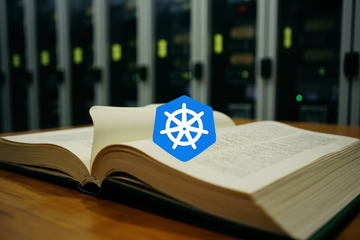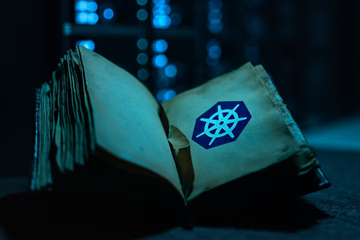Key Takeaways
- The official Kubernetes website (kubernetes.io) is the primary source for documentation, including concepts, tasks, and tutorials.
- The Kubernetes API reference details all API objects and their fields, crucial for understanding resource configuration.
- The
kubectldocumentation explains each command and its options, essential for command-line interaction with Kubernetes clusters. - Kubernetes community forums are valuable for asking questions, finding solutions, and learning from others' experiences.
- Staying up-to-date with the latest Kubernetes changes and verifying the accuracy of documentation are crucial best practices.
- Contributing to Kubernetes documentation by submitting corrections or improvements benefits the entire community.
- Cross-referencing multiple sources, experimenting with code examples, and seeking community help can overcome challenges with outdated or unclear documentation.
Table of Contents
- Introduction To Kubernetes Documentation
- Key Kubernetes Documentation Resources
- Key Kubernetes Tutorials and Guides
- Best Practices for Using Kubernetes Documentation
- Troubleshooting Common Issues with Kubernetes Documentation
- Conclusion: Grasping Kubernetes with Effective Documentation
- Frequently Asked Questions
Introduction To Kubernetes Documentation

Kubernetes documentation is a key resource for DevOps engineers, cloud architects, system administrators, and platform engineers. Using it effectively is vital for managing and fixing problems in Kubernetes (K8s) environments.
Kubernetes can be complex. The right documentation can simplify tasks. This article covers key resources, tutorials, and best practices.
Kubegrade complements a strong knowledge of Kubernetes documentation by simplifying cluster management. It's a platform for secure, automated K8s operations, enabling monitoring, upgrades, and optimization.
Key Kubernetes Documentation Resources
Several resources can help you navigate Kubernetes. These include the official Kubernetes website, API reference, kubectl documentation, and community forums.
Official Kubernetes Website
The official Kubernetes website (kubernetes.io) is the main source of information. It includes concepts, tutorials, and tasks. Use the search bar to find specific topics.
API Reference
The API reference details all Kubernetes API objects and their fields. It's useful when you need to understand how to configure resources. You can find specific API versions and their schemas here.
Kubectl Documentation
The kubectl command-line tool lets you run commands against Kubernetes clusters. The kubectl documentation explains each command and its options. Use kubectl --help to see options for each command.
Community Forums
The Kubernetes community forums are great for asking questions and finding solutions to common problems. Search the forums before posting a new question to see if someone has already answered it.
Kubegrade can automate tasks described in these resources. This reduces the need to manually execute commands or configure resources.
Official Kubernetes Website
The official Kubernetes website (kubernetes.io) is the main place for all documentation. It's structured into sections for concepts, tasks, tutorials, and reference documentation.
To find specific information, use the search bar at the top of the page. You can filter results by content type (e.g., tutorial, task) to narrow down your search.
The website gives a full view of Kubernetes features and how they work.
Kubernetes API Reference
The Kubernetes API reference is the source of truth for all API objects and their properties. It's important for knowing how Kubernetes works.
You can access the API reference on the Kubernetes website. It details each API object, its fields, and their types.
For example, the API reference shows the structure of Pods, Services, and Deployments. It explains what fields are required, which are optional, and what values they can have.
The API reference also provides information about API versions and deprecated features. This helps you keep your configurations up-to-date.
Kubegrade interacts with the Kubernetes API. Familiarity with the API reference helps you use Kubegrade's features effectively.
Kubectl Documentation
The kubectl documentation is the main resource for using the Kubernetes command-line tool. It explains commands, flags, and options.
To find information about a specific command, use kubectl [command] --help. For example, kubectl create --help shows options for creating resources.
kubectl lets you deploy applications, manage resources, and fix problems. The documentation provides examples for these tasks.
Use the --help flag to access documentation directly in the command line.
Kubegrade offers a user-friendly interface that works with kubectl. Knowing the kubectl documentation can improve your experience with Kubegrade.
Kubernetes Community Forums and Resources
Kubernetes community forums, like Stack Overflow, Kubernetes Slack, and the Kubernetes mailing list, are valuable for information and support.
To search effectively, use specific keywords related to your problem. Before asking a question, check if it has already been answered.
When you ask a question, be clear and concise. Provide details about your setup and the issue you're facing.
These community resources help you find solutions to common problems and learn from others.
Contribute back to the community by sharing what you know and helping others.
Key Kubernetes Tutorials and Guides

Here's a list of Kubernetes tutorials and guides for common tasks like deploying applications, managing resources, and setting up networking.
Beginner
- Kubernetes Basics Tutorial: Learn the basics of deploying an application.
Intermediate
- Configure Service Accounts for Pods: Configure service accounts.
Advanced
- Kubernetes Operators: Learn about extending Kubernetes with operators.
Use these tutorials to learn skills and solve problems.
Kubegrade can simplify the deployment and management described in these tutorials.
Beginner Tutorials: Getting Started with Kubernetes
Here are some beginner-friendly Kubernetes tutorials that cover the basics:
- Kubernetes Basics: Learn about Kubernetes architecture and deploy a simple application.
- Kubernetes Objects: Explore Pods, Services, and Deployments.
- Kubectl Overview: Learn basic operations using
kubectl.
These tutorials help new users learn Kubernetes quickly.
Kubegrade simplifies initial setup and deployment, making it easier for beginners to begin.
Intermediate Tutorials: Managing and Scaling Applications
These Kubernetes tutorials cover managing and scaling applications:
- Performing a Rolling Update: Implement rolling updates.
- ConfigMaps: Learn about using ConfigMaps.
- Secrets: Secure sensitive information using Secrets.
These tutorials help you manage and scale your applications.
Kubegrade automates many management and scaling tasks, reducing manual work.
Advanced Tutorials: Advanced Configuration and Optimization
These advanced Kubernetes tutorials cover configuration and optimization:
- Debug Applications: Set up monitoring and logging.
- Network Policies: Configure advanced networking policies.
- Kube-scheduler: Using advanced scheduling techniques.
These tutorials help you optimize Kubernetes deployments for performance, security, and cost.
Kubegrade provides advanced monitoring and optimization features that complement these tutorials.
Task-Specific Guides: Solving Common Kubernetes Problems
These guides address common Kubernetes problems and use cases:
- Debugging Kubernetes Applications: Troubleshooting deployment failures.
- Debugging Kubernetes Nodes: Diagnosing networking issues.
These guides help you quickly find solutions to specific problems.
Kubegrade's monitoring and alerting features help identify and diagnose issues, making it easier to find solutions in these guides.
Best Practices for Using Kubernetes Documentation
Here are some best practices for using Kubernetes documentation effectively.
- Stay up-to-date with the latest changes by checking the official Kubernetes website regularly.
- Contribute to the documentation by submitting corrections or improvements.
- When troubleshooting, check the documentation for common issues and solutions.
- Verify the accuracy and relevance of documentation by comparing it with your own experiences and testing.
- Use the documentation in a collaborative environment by sharing tips and findings with your team.
Kubegrade incorporates best practices for Kubernetes management, reducing the need to constantly check documentation for routine tasks.
Staying Up-to-Date with Kubernetes Documentation
Staying current with Kubernetes documentation is important. Kubernetes changes often, so keeping up helps avoid problems.
Monitor official Kubernetes channels like the blog and release notes for updates. These sources announce new features, bug fixes, and changes.
Understand how changes affect your deployments. Check if new versions require configuration updates.
Use versioning information to ensure compatibility. Match your configurations to the correct Kubernetes version.
Kubegrade automatically updates to support the latest Kubernetes versions, reducing the need for manual updates.
Verifying Accuracy and Relevance
It's important to verify that Kubernetes documentation is correct and relevant. Here's how:
- Cross-reference information from multiple sources. Don't rely on a single source.
- Look for outdated or incorrect information. Check the publication date and compare with recent changes.
- Test documentation examples in a sandbox environment before applying them to production.
- Think critically when reading documentation. Consider whether the information applies to your specific situation.
Kubegrade's features are tested and validated against the official Kubernetes documentation.
Contributing to Kubernetes Documentation
You can help improve Kubernetes documentation. Contributing benefits the whole community.
To submit corrections, improvements, or new content, follow the guidelines on the Kubernetes website.
Write clearly and concisely. Use examples and explain concepts simply.
Contributing helps others and improves your own knowledge.
Kubegrade users can contribute by sharing their experiences and best practices.
Using Documentation in a Collaborative Environment
Using Kubernetes documentation as a team can improve efficiency and reduce errors.
- Share documentation links and notes with team members. This ensures everyone has access to the same information.
- Create a shared knowledge base of Kubernetes best practices. This helps standardize processes and avoid common mistakes.
- Communicate clearly and share knowledge openly. Encourage team members to ask questions and share what they've learned.
Kubegrade helps collaboration by providing a central place for managing Kubernetes resources and configurations.
Troubleshooting Common Issues with Kubernetes Documentation

Users sometimes face challenges with Kubernetes documentation, like outdated information, unclear explanations, and missing examples.
To overcome these challenges:
- Cross-reference multiple sources. Don't rely on just one document.
- Experiment with code examples to see how they work in practice.
- Seek help from the community forums if you're stuck.
Report issues and contribute improvements to the documentation to help others.
Kubegrade's monitoring and alerting features can help identify issues that might require checking the Kubernetes documentation.
Dealing with Outdated Information
Outdated information is a problem in any documentation, including Kubernetes. Here's how to deal with it:
- Check publication dates and release versions to identify outdated content.
- Find updated information in release notes and commit histories.
- Use the official Kubernetes blog and community forums to verify information.
Kubegrade's compatibility with the latest Kubernetes versions reduces the risk of encountering outdated documentation.
Interpreting Ambiguous Explanations
Sometimes, Kubernetes documentation can be unclear. Here's how to deal with ambiguous explanations:
- Cross-reference multiple documentation sources to get different perspectives.
- Seek clarification from the Kubernetes community if you're still unsure.
- Experiment with code examples to better understand concepts.
- Break down complex topics into smaller parts.
Kubegrade's user-friendly interface can simplify Kubernetes concepts, reducing reliance on documentation alone.
Finding Missing Examples and Use Cases
Sometimes, Kubernetes documentation lacks examples and use cases. Here's how to find them:
- Look for examples in community forums, blog posts, and open-source projects.
- Create your own examples and share them with the community.
- Adapt existing examples to fit your specific needs.
Kubegrade provides pre-built templates and configurations for common Kubernetes deployments, reducing the need to search for external examples.
Reporting Issues and Contributing Improvements
Reporting issues and contributing improvements helps make Kubernetes documentation better for everyone.
To submit bug reports and pull requests, follow the instructions on the Kubernetes website.
Provide clear and concise feedback. Explain the issue and suggest a solution.
Contributing improves the quality of the documentation and helps the community.
Kubegrade users can contribute by sharing their experiences and suggesting improvements to the platform.
Conclusion: Grasping Kubernetes with Effective Documentation
Grasping Kubernetes documentation is important for successful K8s operations. This article covered key resources, tutorials, and best practices.
Continue exploring and contributing to the Kubernetes community.
Kubegrade can further streamline Kubernetes management, allowing you to focus on innovation.
Frequently Asked Questions
- What are the best practices for contributing to Kubernetes documentation?
- Contributing to Kubernetes documentation involves several best practices. Firstly, familiarize yourself with the existing documentation structure and style guides, which can typically be found in the Kubernetes GitHub repository. It’s important to ensure clarity and conciseness, using simple language and avoiding jargon where possible. Additionally, always include relevant examples to illustrate points clearly. Before submitting changes, run a local build of the documentation to check for formatting issues. Lastly, engage with the community through forums or Slack channels to solicit feedback and collaborate effectively.
- How can I effectively navigate Kubernetes documentation for troubleshooting?
- To effectively navigate Kubernetes documentation for troubleshooting, start by using the search function to find specific error messages or issues you encounter. The documentation typically includes a dedicated troubleshooting section, which categorizes common problems and their solutions. Familiarize yourself with the architecture and components of Kubernetes, as understanding these will help you pinpoint issues more quickly. Additionally, consider using community forums and GitHub issues for real-world examples and solutions shared by other users, which can provide practical insights beyond the official documentation.
- Are there specific tools recommended for managing Kubernetes documentation?
- Yes, several tools are highly recommended for managing Kubernetes documentation. Markdown editors are commonly used due to their simplicity and compatibility with most documentation platforms. Static site generators like Hugo or Jekyll are also popular for building documentation sites from Markdown files. For collaboration and version control, GitHub is essential, allowing multiple contributors to work on documentation simultaneously. Additionally, tools like Read the Docs can be used for hosting and versioning documentation effectively.
- How often is Kubernetes documentation updated, and how can I stay informed about changes?
- Kubernetes documentation is updated frequently, often in line with new releases or feature additions. To stay informed about changes, regularly check the official Kubernetes blog and release notes, which outline updates and enhancements. Subscribing to the Kubernetes mailing lists and following key contributors on social media platforms can also provide insights into ongoing documentation efforts. Moreover, engaging with the Kubernetes community through forums can help you keep abreast of the latest developments and changes.
- What resources are available for learning more about Kubernetes beyond the official documentation?
- Beyond the official documentation, several resources can enhance your understanding of Kubernetes. Online learning platforms like Udemy, Coursera, and Pluralsight offer comprehensive courses on Kubernetes. Books such as 'Kubernetes Up & Running' provide in-depth coverage of real-world scenarios. You can also explore community resources like webinars, podcasts, and local meetups that focus on Kubernetes topics. Additionally, contributing to open-source projects or participating in hackathons can provide practical experience and deepen your knowledge of Kubernetes.




